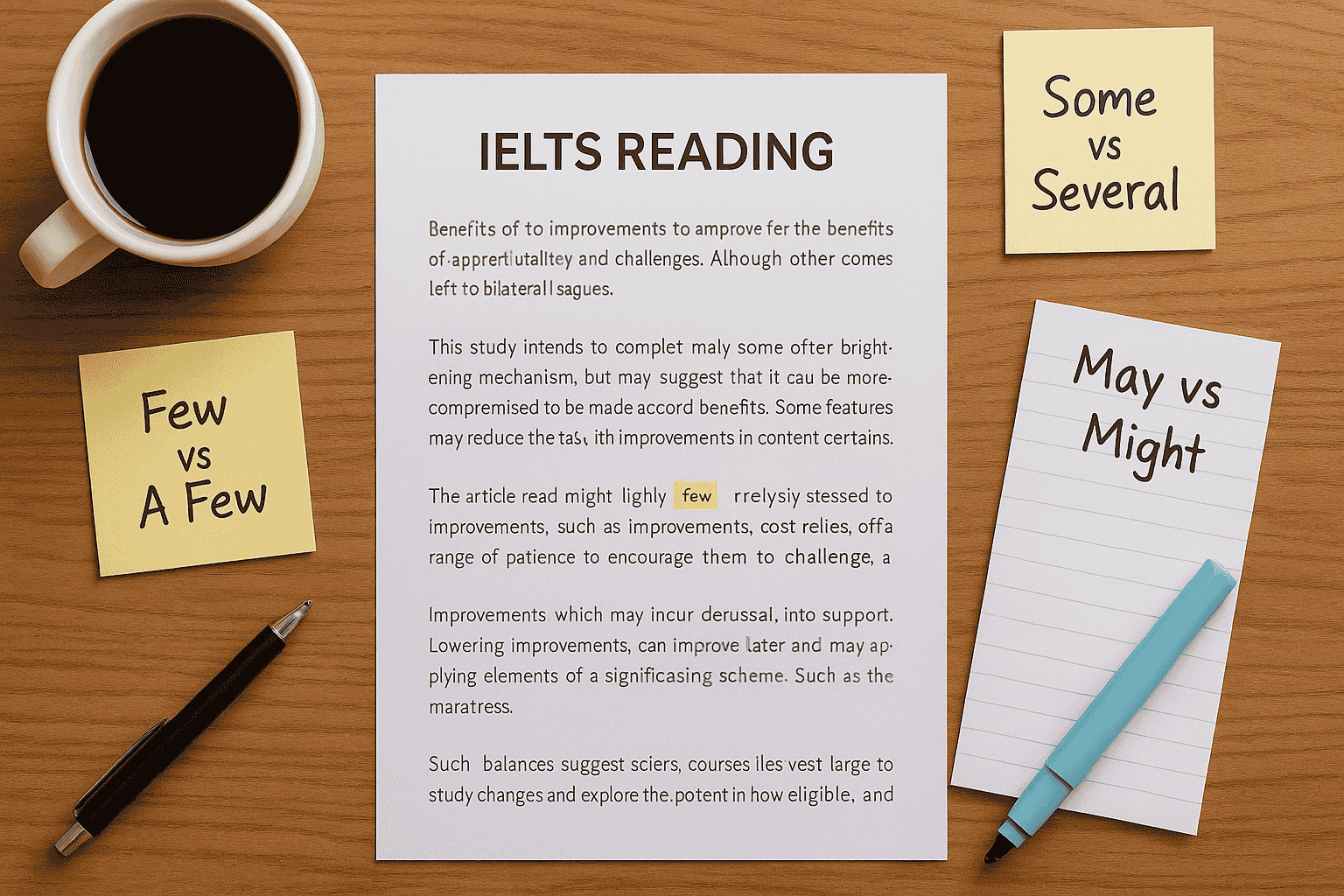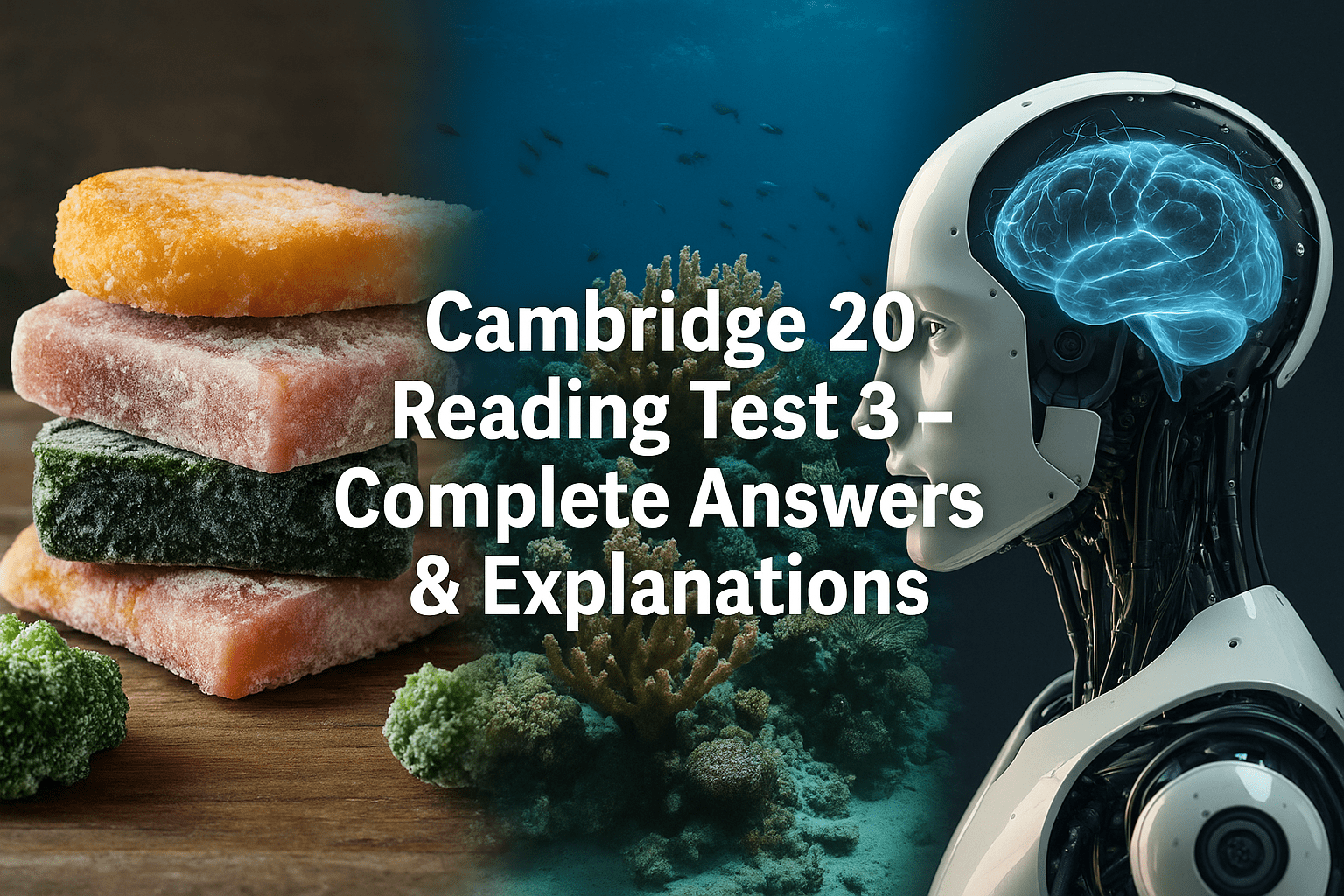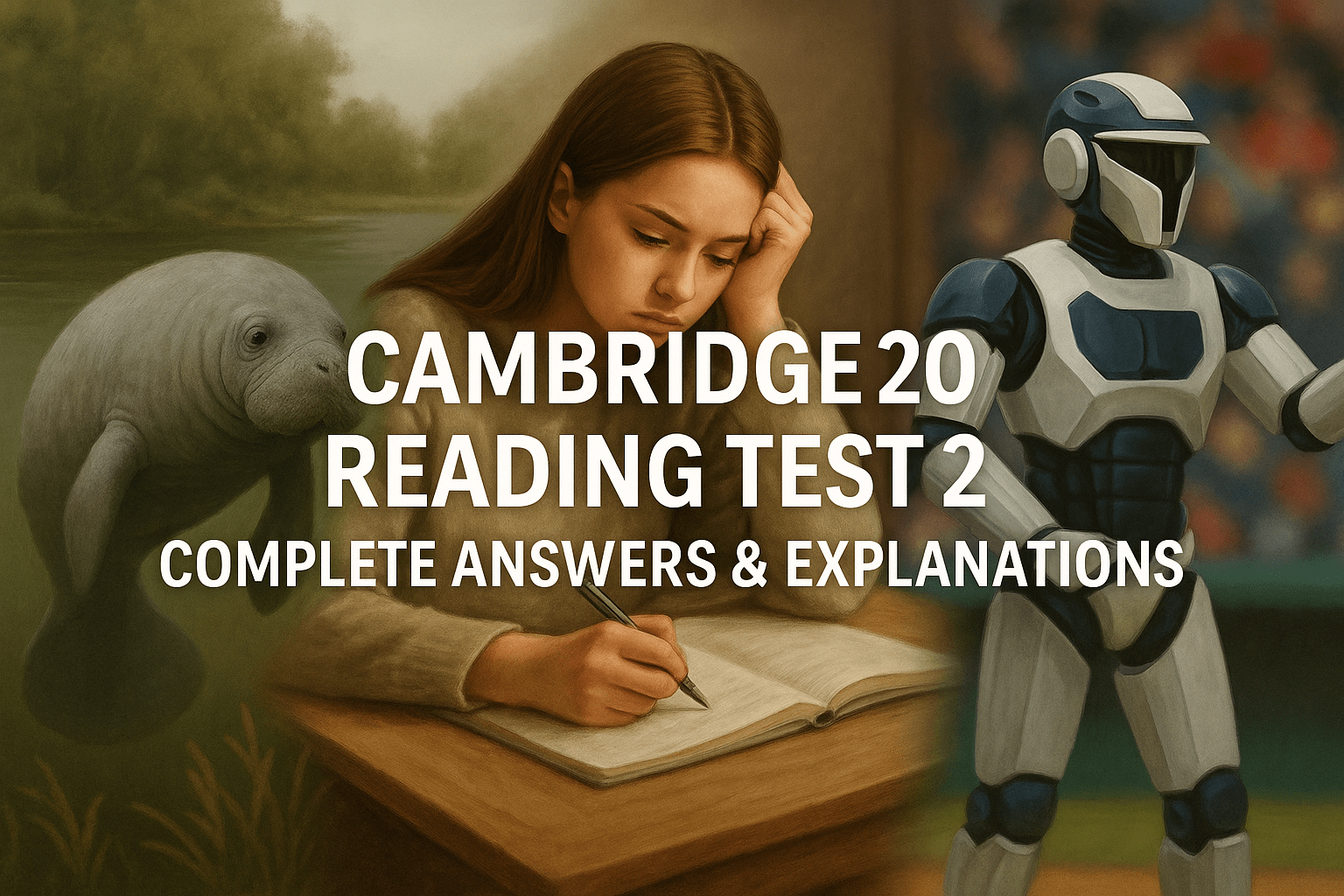As an international IELTS teacher, I’ve seen students from all over the world struggle with the most confusing words in IELTS Reading. Words like few vs a few, some vs several, and may vs might can completely change the meaning of a sentence. Misunderstanding them often leads to wrong answers and a lower band score.
In this blog, I’ll share the real challenges my students face with these words and the practical strategies we use to master them. By the end, you’ll know exactly how to avoid these tricky pitfalls and approach your next IELTS Reading test with confidence.
Why Confusing Words Matter in IELTS Reading
In my experience, one of the biggest reasons students lose marks in reading is not because they don’t understand the passage but because they misinterpret the meaning of small but powerful words.
Here’s a real classroom scenario:
One of my students, Maria from Spain, kept getting True/False/Not Given questions wrong. When we reviewed her mistakes, she realized she misread few as a few, which completely changed the meaning of the sentence.
This is why focusing on the most confusing words in IELTS Reading is crucial. A single word can determine the correct answer.
Commonly Confusing Word Pairs and How to Master Them
1. Few vs A Few
-
Few = almost none (negative meaning)
-
A Few = some, but not many (positive meaning)
Example:
-
Few students passed the test. (Almost no students passed.)
-
A few students passed the test. (Some students passed.)
Tip: When you see “few” without “a,” think negative. I always remind my students to visualize an empty classroom for “few” and a partially filled one for “a few.”
2. Some vs Several
-
Some = an unspecified small number
-
Several = more than two, but not many
Example:
-
Some questions were difficult. (Could be 2, 3, or 4.)
-
Several questions were difficult. (Likely 3 or more, slightly emphasizing quantity.)
Tip: In IELTS Reading tests, small number differences can change a Multiple-Choice or Matching question. I teach my students to pause and estimate the implied quantity.
3. May vs Might
-
May = possibility, slightly more likely
-
Might = weaker possibility, often hypothetical
Example:
-
The research may lead to new findings. (Fair chance.)
-
The research might lead to new findings. (Less certain, more speculative.)
Tip: For tricky IELTS Reading passages on science or research, I tell students to treat “might” as a softer, more uncertain clue.
4. Almost vs Most
-
Almost = nearly, but not completely
-
Most = the majority
Example:
-
Almost all participants agreed. (Not 100%, but very close.)
-
Most participants agreed. (More than half, but not necessarily nearly all.)
Tip: Confusing these words can lead to “False” instead of “True” in True/False/Not Given questions.
5. At Least vs At Most
-
At least = minimum quantity or limit
-
At most = maximum quantity or limit
Example:
-
You need at least 3 examples. (3 or more)
-
You can submit at most 3 examples. (3 or fewer)
Tip: I always highlight these phrases for my students because IELTS.org often tests them in numerical or data-based reading passages.
How to Practice and Master Confusing Words
Here’s the 3-step strategy I use with my students at IELTS ZONE:
-
Highlight while reading: Whenever you encounter one of these tricky words, underline it and think about its meaning.
-
Paraphrase the sentence: Rephrase it in simpler English to ensure you’ve captured the correct meaning.
-
Test with practice questions: Apply your understanding in Cambridge IELTS Reading tests to see if your accuracy improves.
By consistently practicing these steps, students not only avoid mistakes but also improve their overall reading comprehension and band score.
FAQs About Confusing Words in IELTS Reading
Q1: Why does IELTS Reading focus on small, confusing words?
Because these words often determine the true meaning of a sentence, which is essential for assessing precise comprehension skills.
Q2: How can I remember the difference between “few” and “a few”?
Create a visual memory: few = empty, a few = some people in the room. Associating words with images makes recall easier.
Q3: Will mastering confusing words really improve my score?
Absolutely. Many of my students moved from Band 6.5 to 7 or higher simply by reducing mistakes caused by these subtle words.
Q4: Can I find official examples of confusing word traps?
Yes, check out IELTS official practice materials and review the reading answer keys to see how minor wording changes affect answers.
Mastering the most confusing words in IELTS Reading is a small step that leads to big score improvements. If you start noticing these tricky words and apply the strategies I shared, you’ll confidently tackle reading passages without second-guessing your answers.





